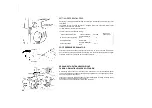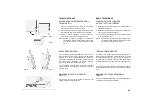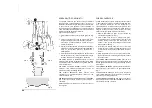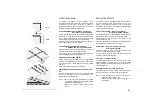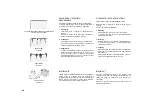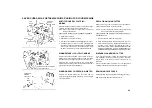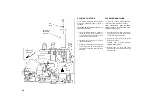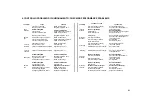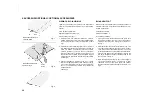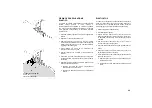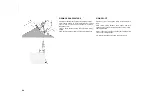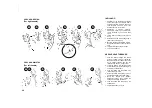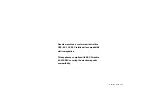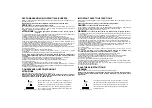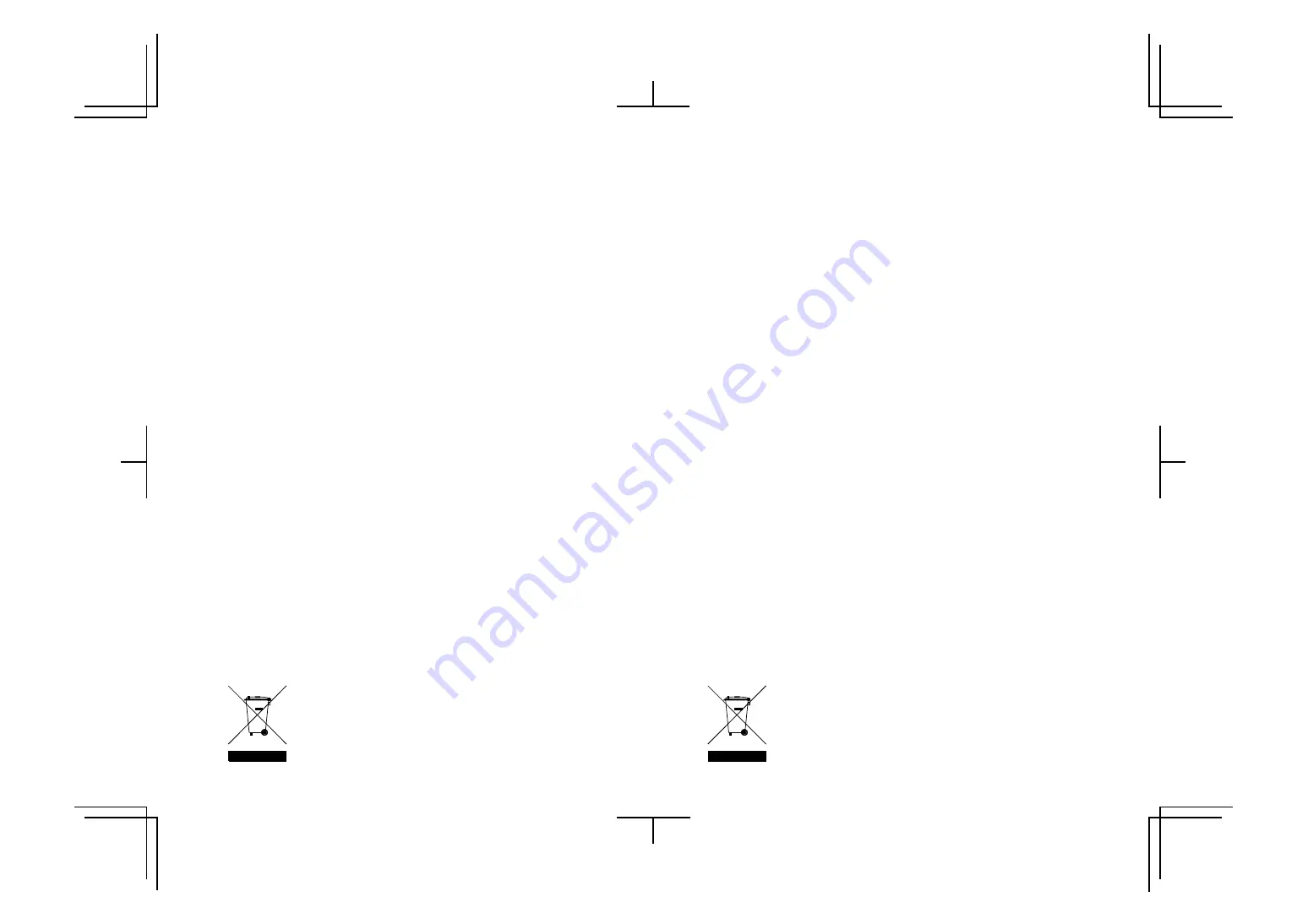
Questa apparecchiatura riporta il simbolo di riciclaggio. Ciò
significa che, a fine vita, il prodotto dovrà essere smaltito
separatamente nei previsti luoghi di raccolta e non insieme ai
normali rifiuti domestici, come stabilito dalle leggi vigenti. Chi
non si atterrà a queste indicazioni potrà essere sanzionato
come previsto dalla legge.
European Union Only
This equipment is marked with the recycling symbol. It means
that at the end of the life of the equipment you must dispose of it
separately at an appropriate collection point and not place it in
the normal domestic unsorted waste stream. This will benefit the
environment for all.
European Union Only
RACCOMANDAZIONI IMPORTANTI DI SICUREZZA
Quando si utilizza un apparecchio elettrico si devono osservare delle precauzioni elementari e, in
particolare le seguenti :
Leggere tutte le istruzioni prima di utilizzare la macchina per cucire familiare.
PERICOLO -
Per evitare ogni rischio di scossa :
Non lasciare mai la macchina incustodita quando è allacciata alla rete. Staccare sempre la spina
dalla presa murale dopo averla utilizzata e prima di pulirla. Disinserirla prima di cambiare la
lampadina. Utilizzate una lampadina massimo 15W.
ATTENZIONE -
Per evitare ogni rischio di bruciature, fuoco, scossa a ferite a
persone:
- Non permettere che si giochi con la macchina. Un'attenzione particolare deve essere fatta quando
la macchina per cucire è utilizzata da bambini o in loro presenza.
- Utilizzare la macchina per cucire unicamente per l'uso descritto in questo manuale.
- Utilizzare solo gli accessori raccomandati dal costruttore e menzionati in questo manuale.
- Non utilizzare mai la macchina per cucire con un cordone o la presa rovinati, quando non funziona
correttamente, ha subito una caduta o un danno o se questa è entrata in contatto con I'acqua.
Portarla dal concessionario autorizzato più vicino o a un centro di servizio assistenza per un
controllo, riparazione, regolazioni elettriche o meccaniche.
- Questa macchina è fornita di un cordone speciale per l'allacciamento, se è rovinato deve essere
sostituito con un cordone identico. Quest'ultimo si può ottenere presso il vostro concessionario.
- Non mettere in funzione la macchina con le aperture per il passaggio dell'aria ostruite.
Mantenere queste aperture di ventilazione della macchina e del pedalino libere da ogni residuo di
polvere, di fili o tessuto.
- Non introdurre mai un oggetto in una di queste aperture.
- Non utilizzare la macchina in presenza di vaporizzatori aerosol o in locali dove si utilizza
dell'ossigeno.
- Per disinserire, disinnestare tutti i bottoni, poi staccare la spina dalla presa murale.
- Non mettere niente sul pedale di controllo della velocità poichè ciò potrebbe fare
partire accidentalmente la macchina o sovrariscaldare il motore o lo stesso pedale di
controllo.
- Per disinserire, non tirare mai il cordone. Prendere con la mano la presa e non il cordone.
- Tenere le dita lontano da ogni organo in movimento e in particolare dall'ago.
- Utilizzare sempre la placca ago adeguata. Una placca sbagliata può rompere l'ago.
- Non utilizzare aghi storti.
- Non tirare o spingere il tessuto mentre cucite. Questo può deformare l'ago.
- Togliere la corrente prima di maneggiare vicino all'ago per infilare, cambiare l'ago o cambiare il
piedino premi-stoffa, ecc.
- Disinserire la macchina dalla presa murale prima di iniziare la manutenzione descritta nel manuale.
- Utilizzare solo pezzi di ricambio originali.
"CONSERVARE QUESTE ISTRUZIONI"
ATTENZIONE
Siate prudenti lavorando vicino all'ago per non pungervi le dita.
Quando usate la vostra macchina per la prima volta, mettete un pezzo di stoffa di
scarto sotto il piedino pressore e fate girare la macchina senza filo per alcuni minuti.
Asciugare macchie d'olio che potrebbero apparire.
IMPORTANT SAFETY INSTRUCTIONS
When using an electrical appliance, basic safety precautions should always be followed, including
the following:
Read all instructions before using your household sewing machine.
DANGER -
To reduce the risk of electric shock :
Your household sewing machine should never be left unattended when plugged in. Always unplug
your machine from the electric outlet immediately after using and before cleaning.
Always unplug before relamping. Use a bulb 15 W max.
WARNING -
To reduce: the risk of burns, fire, electric shock, or injury to persons :
- Do not allow to be used as a toy. Close attention is necessary when this sewing machine is used by
or near children.
- Use this sewing machine only for its intended use as described in this manual. Use only
attachments recommended by the manufacturer as contained in this manual.
- Never operate this sewing machine if it has a damaged cord or plug, if it is not working properly, if it
has been dropped or damaged, or dropped into water. Return the sewing machine to the nearest
authorized dealer or service center for examination, repair, electrical or mechanical adjustment.
- This machine is equipped with a special cord which, if damaged, must be replaced by an identical
cord. This can be obtained from your dealer.
- Never operate the sewing machine with any air openings blocked. Keep ventilation openings of the
sewing machine and foot controller free from the accumulation of lint, dust and cloth.
- Never drop or insert any object into any opening.
- Do not use outdoors.
- Do not operate where aerosol (spray) products are being used or where oxygen is being
administered.
- Do not put any thing on the control foot release because the machine may
accidentally start and the motor or the foot release may overheat.
- To disconnect, turn all controls to the off position, then remove plug from outlet.
- Do not unplug by pulling on cord. To unplug, grasp the plug, not the cord.
- Keep fingers away from all moving parts. Special care is required around the sewing needle.
- Always use the proper needle plate. The wrong plate can cause the needle to break.
- Do not use bent needles.
- Do not pull or push fabric while stitching. It may deflect the needle.
- Switch the machine off when making any adjustments in the needle area, such as threading needle,
changing needle, or changing presser foot, and the like.
- Always unplug the sewing machine from the electric outlet when making any user servicing
mentioned in the instruction manual.
- Use only identical replacement parts.
"SAVE THESE INSTRUCTIONS"
WARNING
When working close to the needle, be very careful not to prick your fingers.
When you use the machine for the first time, position a piece of cloth under the presser
foot and run the machine without thread for some minutes. Dry any oil spots which
might appear.
Summary of Contents for Lock 181
Page 1: ......

